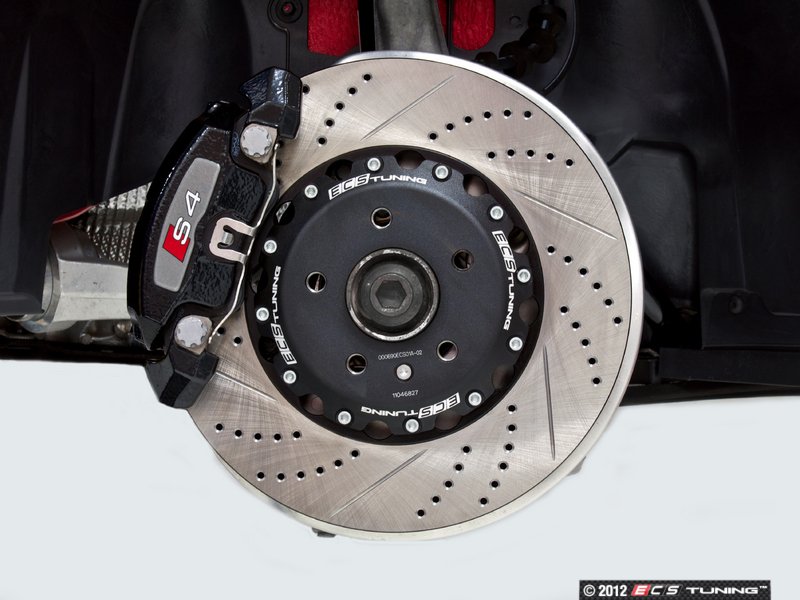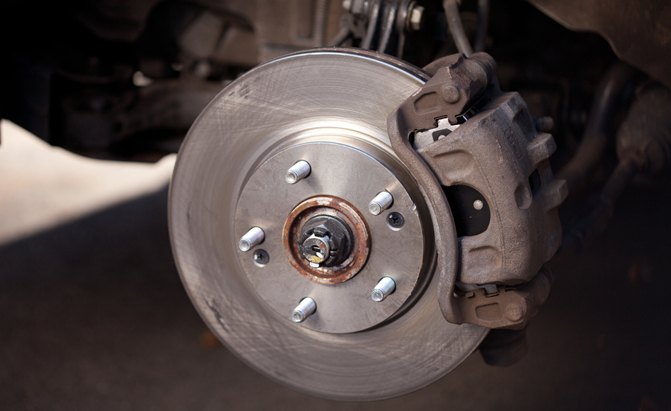Best Slotted Rotors
Brake rotors come in a number of flavors. You often see them vented, drilled, or slotted. Sometimes there's a combination of the three, and it's best to know which works most efficiently for the driving you plan to do. We know one of the biggest enemies of brake performance is heat, so the goal for any of these choices should be cooling your brakes to keep them from fading.
- Best Slotted Rotors For Trucks
- Best Slotted Rotors
- Best Drilled Slotted Rotors
- Best Slotted Rotors For Trucks
Jason Fenske from Engineering Explained is here to help you decide what kind of brake rotors you should choose.
ALSO SEE: How to heel-and-toe and also why you should be doing it
Most brakes are of the vented variety. These vents help move heat along and keep your brakes in the proper temperature range they prefer to mitigate fading.
Alternatively, you might see drilled rotors on some high-end sports cars. You won't see these rotors on race cars though, as the drilled rotors can become stressed and damaged during the high-stress environment of racing. The reason you see drilled rotors on some sports cars? Honestly, it's because people think they look cool.
CHECK OUT: What's the difference between steel and rubber brake lines?



Slotted rotors are better for actual heavy-duty performance applications. They're stronger than drilled rotors, and they provide some other advantages as well, such as additional biting surfaces.
As always, Jason dives into the science behind it all in this video, which you can watch by hitting the play button above.
Jul 18, 2021 Drilled and slotted rotors are best for those who drive on rougher roads. Planning to take your vehicle off-road? Look for rotors with a slotted design to give you that added stopping force.
For 2014-2021 Infiniti Q50, Q60 R1 Concepts Front Rear Silver Zinc Cross Drilled Slotted Brake Rotors Kit + Ceramic Brake Pads. 4.3 out of 5 stars. Get it as soon as Mon, Sep 27. FREE Shipping by Amazon. Brake rotors come in a number of flavors. You often see them vented, drilled, or slotted. Sometimes there's a combination of the three, and it's best to know which works most efficiently for the. In any event, this package includes a quartet of brake rotors and eight ceramic brake pads with hardware. Speaking to the, erm, plain nature of these items are billed as replacement rotors that are not drilled or slotted. Nevertheless, the ad says they offer equal quality as OEM rotors but at an affordable price.
Once you get your braking sorted, why not learn about how to heel and toe downshift?
_______________________________________
Follow Motor Authority on Facebook, Twitter and YouTube.
Drilled, slotted, or vented; which brake rotors are best?
Without question, brakes are the most powerful system on your vehicle. No matter how much horsepower you have, none of it’s of any use if you can’t scrub off enough speed to keep from rear-ending the car in front of you. Your factory brakes provide ample stopping power for your casual commute or the occasional unforeseen panic stop, but for the performance-minded enthusiast, an upgraded set of drilled or slotted rotors is the better choice. So what exactly are the differences between drilled vs. slotted brake rotors? Here, we discuss the benefits and drawbacks of each, so you can make your own informed decision.
Smooth Brake Rotors
A premium set of smooth rotors provides more than enough stopping power under normal driving conditions. That’s why 99.9% of new cars still come with them from the factory. They provide the most surface area vs. drilled or slotted rotors and therefore are very effective at acting as a heat-sink, which is exactly what a brake rotor was designed to do. They’re also not as prone to cracking under extreme use like drilled rotors can be. The absence of slots or drill holes allows smooth rotors to maintain maximum structural integrity, making them suitable for moderate track use when paired with performance brake pads and high-boiling point brake fluid. There are several varieties available, from direct replacement to high-quality zinc-coated rotors, to fight off surface rust and maintain their like-new appearance for miles and miles.
Slotted Brake Rotors
Best Slotted Rotors For Trucks
Slotted rotors, as the name implies, have grooves cut along the face of the rotor where the pad makes contact. This is because under repeated heavy braking, as the temperature of your brake system increases, a layer of gas and dust forms between the pad and rotor from the material transfer caused by friction. The slots in the rotor allow an escape route for the built-up gases. This allows more of the brake pad’s surface area to contact the rotor, resulting in better pad bite and more consistent stops. Also, this increased surface contact results in a higher coefficient of friction, so you’re actually using less energy to slow your vehicle the same amount. The venting provided by slotted rotors is one of the main ways to combat brake fade and maintain consistent stopping power, lap after lap. Be aware, however, that some dedicated slotted “racing” rotors actually employ a sharp edge on the slots to cut into the brake pad a small amount for better bite, but this can greatly accelerate brake wear.
Cross Drilled Brake Rotors
Cross-drilled brake rotors look undeniably cool peeking out from behind a set of flashy wheels, and they keep your brakes the same way – cool. In the early days of racing, drilled rotors were an effective way of venting the layer of gas and dust that inevitably builds up between asbestos brake pads and the rotor under repeated, hard braking. However, as technology and brake pad materials have progressed, outgassing has become less and less of an issue. These days, while they still look great and perform well, the drill holes are more for aesthetic reasons than anything else. For performance driving, slotted rotors have become the preferred choice because cross drilled rotors are more prone to stress cracking under extreme use. Just take a look through the spokes on the wheel of any modern race car – there won’t be a drilled rotor in sight. On the street, however, the temperatures your brakes encounter never even come close to the levels they do on the track. So, the venting properties of drilled rotors offer the added benefits of keeping temperatures down under normal driving for prolonged pad life, as well as improved wet-weather performance by allowing water to escape the rotor’s surface, increasing initial pad bite.
Best Slotted Rotors
Drilled & Slotted Brake Rotors
Drilled and slotted rotors provide the looks and functionality of both cross-drilled rotors and slotted rotors combined. While still not ideal for the abuse they would suffer on a racetrack (i.e. the drill holes being prone to stress-cracking), one of the places drilled & slotted rotors shine is on heavy vehicles towing heavy loads. The heavier the vehicle, the more energy is needed to slow it to a safe and reliable stop. Brakes convert kinetic energy (motion) into heat energy, and heavier vehicles invariably generate more heat in their braking systems. So a rotor that runs cooler (cross-drilled) combined with one that maintains a clean contact surface between itself and the brake pad (slotted), when not pushed beyond its thermal threshold, can provide an extra bit of security and durability. Remember, the name of the game is maintaining consistent stopping power every time you hit the brakes. If you’ve ever towed a fully loaded trailer down a mountain pass, you know the terrifying feeling of brake fade. A set of cross-drilled and slotted rotors can give you additional peace of mind by keeping temperatures down and the rotor face clean. Always remember to pair your drilled & slotted rotors with a high-quality set of brake pads designed for your vehicle as well as fresh DOT-3 or DOT-4 brake fluid for best results.
Best Drilled Slotted Rotors
Choosing the Right Brake Rotor
Best Slotted Rotors For Trucks
There are a few things to keep in mind when choosing cross drilled or slotted brake rotors. For street-driven vehicles, both perform equally well and don’t suffer any detrimental side effects. It just comes down to personal preference of which style you prefer. Slotted or cross drilled rotors will not, however, decrease your vehicle’s original stopping distance. Their purpose is to dissipate heat and gases to combat brake fade and provide consistent stops after prolonged abuse. In order to take a sizeable chunk out of your stopping distances, a set of sticky tires and dedicated high performance brake pads are the recommended upgrades. For track driving, slotted rotors are the preferred choice due to their ability to vent gases without weakening their structure. For eye-catching, high-end style, drilled or drilled & slotted rotors are sure to turn heads. For daily driving, any of the above provide more than enough stopping power.